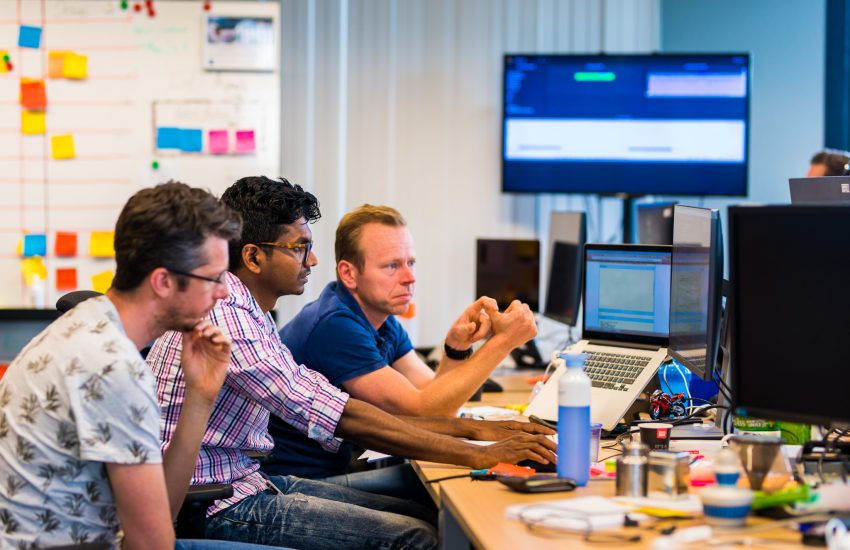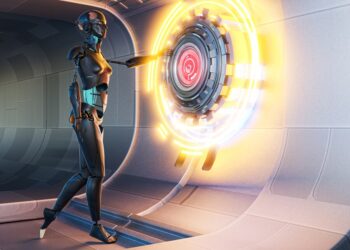The world is becoming automated faster than we could imagine. In the next five years, at least 40 percent of all current jobs are expected to be replaced by automatization. This alarming statistic has started many discussions regarding the future of the labor market and led us to ask: what can replace a human? To answer this question, we need to understand the nature of automation in the modern workplace.
According to Merriam-Webster, automation is “the action of making automatic; as industrial or technological automation”. In simple words, automation is anything that makes a task easier without requiring human involvement. Automation comes in different forms such as software-based or hardware-based. Software-based automation can be simply defined as software programs that help businesses automate tasks efficiently and cost-effectively.
For example, an accounting program can take care of all your financial accounting processes in a well-organized manner, freeing you up to focus on more strategic tasks like evaluating new markets and identifying growth opportunities. Hardware-based automation can be anything from automated factory systems to robotic arms and industrial sensors installed in factories.
What is the future of the labor market with automation?

We are already at the stage where approximately one in four jobs could be replaced by automation. There are many industries where automation is already in practice, such as telemarketing, accounting, and customer service jobs.
Automation is not just reducing the number of jobs, but also increasing the income of workers. As automation becomes more sophisticated, it is not just replacing one type of job with another, but rather combining robotics with AI to create new types of jobs.
It is estimated that in the future, robots will take over 60% of all retail sales and a large percentage of job functions. This is why it is important to understand the future of the labor market with automation.
Types of Robots and why we need Robots?
Robots are either made up of hardware or software. While hardware robots are able to perform a variety of tasks, software robots can only perform a very specific task and are often used in research or development.
For example, a software robot can create a map of a building, analyze data and find the best route for delivery. A hardware robot can perform simple tasks, like packing and unpacking items, and cannot perform any other task until it is reprogrammed. Software robots are often used in research and development, while hardware robots are very expensive and used in more advanced production scenarios.
It is not easy to change the robot’s programming, so they are often made up of multiple sensors, controllers, and other components that can be easily replaced. Why you should care about Robots in the workplace? There are many benefits of Robotics in the workplace.
Robots can perform repetitive tasks that humans find dull and monotonous, so they help to free humans from boring and tedious tasks. Robots can also work around the clock, 24/7, so your business does not have to shut down for holidays or for repairs.
Robots can also help to increase efficiency because humans are often too slow at carrying out a lot of tasks. Finally, robots can be programmed to follow specific rules, so humans don’t have to spend time writing rules by hand.
Benefits of Robotics in the workplace Better customer service – Robots can be programmed to handle repetitive tasks that annoy customers, like checking their bags and scanning their tickets for security. Enhanced reliability – Robots can be programmed to follow rules and perform tasks without any errors, so they help to increase the reliability of products and services. More predictable production – Robots can be programmed to follow specific rules, so they don’t make errors that slow down production.
This helps to increase the predictability of product production. Conclusion We are living in a world where automation is getting more and more advanced. This means that there will be less and less work for humans to do in the future. However, this might not be such a bad thing. You can decide if you want to get your hands dirty or if you want to let machines do the work for you. Hopefully, with time, humans will be able to find other ways to relax and enjoy themselves while also making money.
Why you should care about Robots in the workplace?
From the above discussion, it can be concluded that automation is inevitable, and it has become a trend in almost all industries. Automation not just reduces the number of jobs, but also increases the income of workers. With the advancement of technology, robots are indeed coming to the workplace and replacing human workers. With the increase in the use of automation, there will be a large number of job opportunities left.
Therefore, the question arises that whether automation can replace human workers in the future or not. The other question that arises is why you should care about it. The answer to this question can be found in the future of the labor market with automation. Automation comes in various forms such as software-based or hardware-based.
While software-based automation can be simply defined as software programs that help businesses automate tasks efficiently and cost-effectively, hardware-based automation can be anything from automated factory systems to robotic arms and industrial sensors installed in factories. All these types of automation make production easier, but not necessitating human operators anymore.
Why you should care about Robots in the workplace? With the increase in the use of automation, there will be a large number of job opportunities left. Therefore, the question arises that whether automation can replace human workers in the future or not. The other question that arises is why you should care about it. The answer to this question can be found in the future of the labor market with automation.
Conclusion
Automation comes in different forms such as software-based or hardware-based. While software-based automation can be simply defined as software programs that help businesses automate tasks efficiently and cost-effectively, hardware-based automation can be anything from automated factory systems to robotic arms and industrial sensors installed in factories.
All these types of automation make production easier, but not necessitating human operators anymore. From the above discussion, it can be concluded that automation is inevitable, and it has become a trend in almost all industries.
It is not easy to decide whether automation can replace human workers in the future or not, but why you should care about it? Although automation can reduce the number of jobs, it can also increase the income of workers by automating repetitive tasks. With the advancement of technology, robots are indeed coming to the workplace and replacing human workers.
















